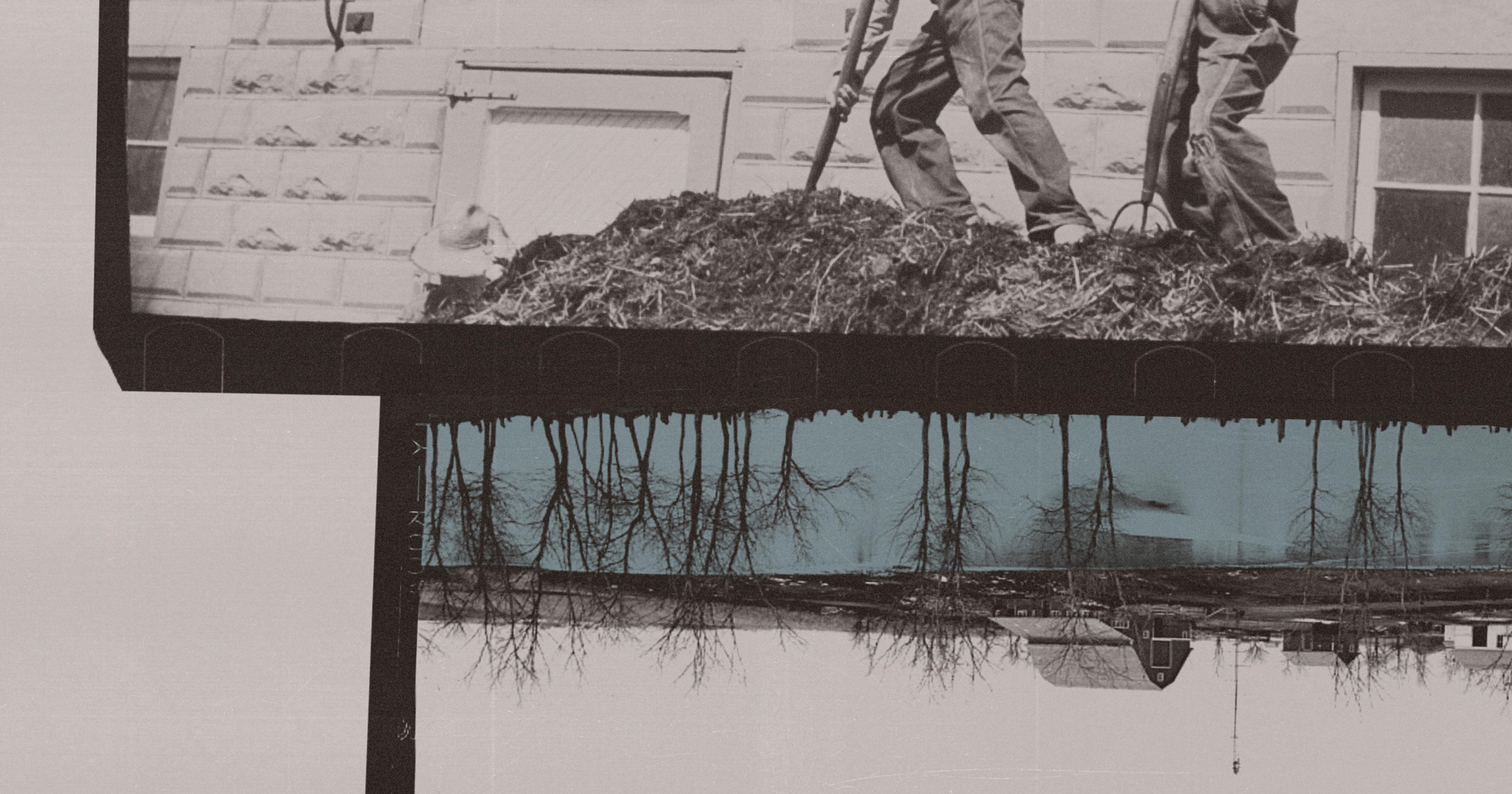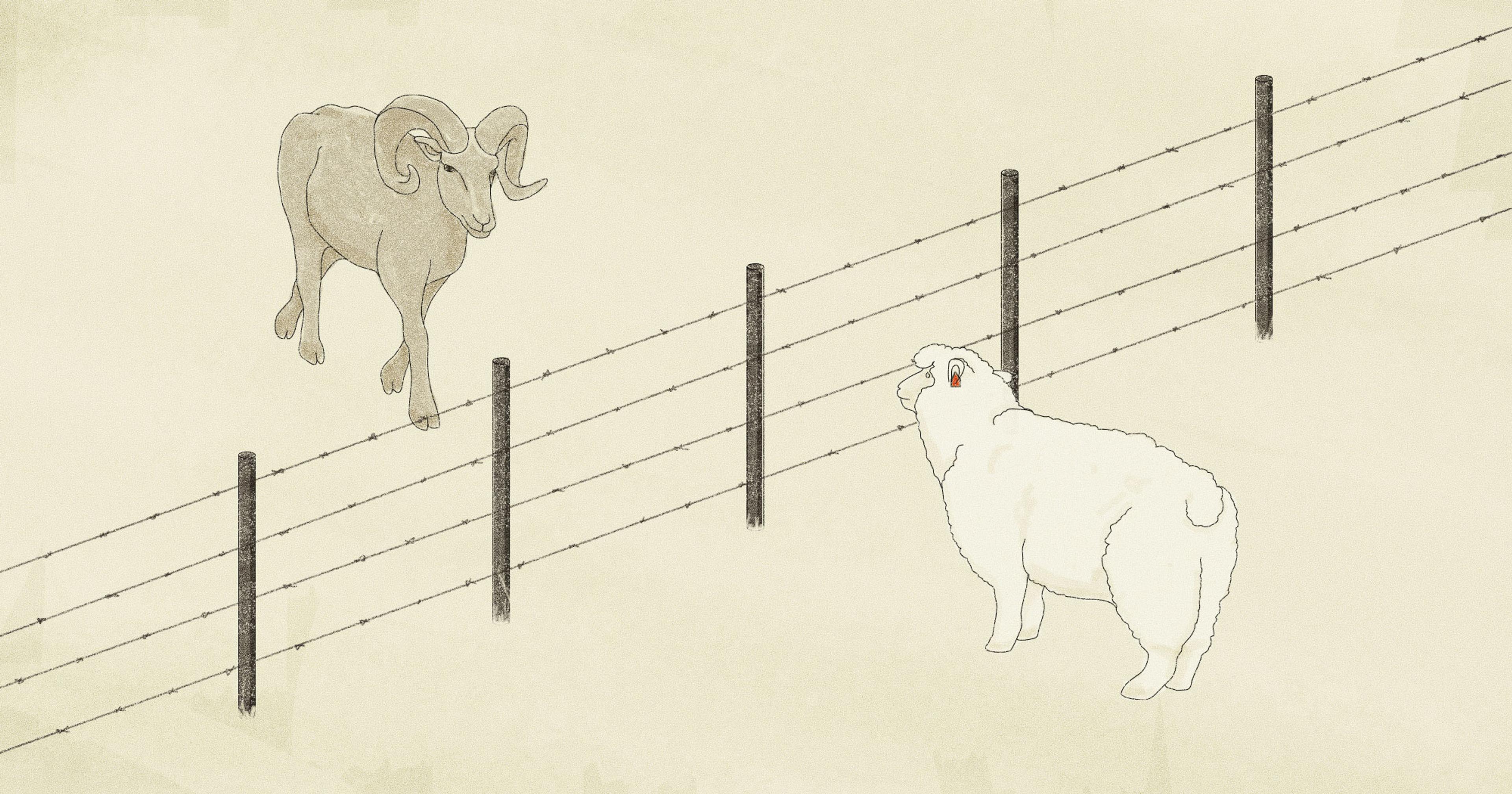Animal waste accounts for 11% of farming’s greenhouse gas emissions. Advocates are looking to the Farm Bill for help.
For years, Paul Danbom let good fertilizer go to waste.
On his 900-head dairy farm in Turlock, California, he was buying fertilizer for his distant cornfields. Meanwhile, he paid to dispose of millions of gallons of perfectly good “brown gold” because there was no easy and ecologically friendly way to get it from his cattle to these fields.
Storing and transporting wet manure via tanker trucks to use for fertilizer can be a costly logistical challenge. The manure on Danbom’s farm was what is known as slurry, a heavy mix of wet and solid waste that requires special trucks and technology to move and pump onto fields.
That heft makes it expensive to transport, which creates incentives for farmers to over-apply manure directly on their nearest fields, polluting nearby waterways. Danbom said that’s precisely what was happening on his farm: He was applying more waste to fields closer to his cattle and paying for fertilizers or waste transportation farther afield.
About three years ago, Danbom invested in a separator system that would allow him to easily transport dry waste to those distant fields and apply the remaining liquid closer to the source, all while curbing emissions and preventing toxic runoff.
“When I separated [dry waste from wet manure], it allowed me to get manure to [fields] where I couldn’t get it before,” Danbom said.
Manure is a messy, costly hassle for livestock farms. It’s also the agriculture sector’s biggest climate culprit.
Waste makes up roughly 11% of the industry’s greenhouse gas emissions, according to the Environmental Protection Agency (EPA). Manure is also a primary polluter of groundwater, streams and drinking water, with nitrate and phosphorus runoff leading to aquatic dead zones across the country.
The federal government knows this. In its 2021 Methane Emissions Reduction Action Plan, the Biden Administration outlined how programs funded by the Farm Bill should “adopt new practices that improve manure management and can substantially reduce methane emissions.”
Ahead of this year’s Farm Bill, a massive piece of legislation approved every five years, advocates are asking for increased funding to do just that.
The Status Quo
There are currently three major ways livestock farmers deal with waste. The first is manure lagoons, where wet, slurry manure is held on the farm property. Though widely used, they contribute to groundwater contamination, odor pollution, and methane emissions.
Inside manure lagoons, waste isn’t exposed to oxygen and the natural process known as anaerobic digestion begins. This process eventually results in the release of methane, the primary ingredient in methane gas, a major driver of climate change.
The second way farmers deal with livestock waste is through anaerobic digesters. Digesters have grown in popularity in recent years, allowing farmers to capture methane emitted from manure then sell the gas as a fuel source to utilities. Instead of trucking the wet waste, it is captured and placed into a giant, covered building, triggering the digestion process.
Digesters, from poultry operations in Delaware to hog farms in North Carolina, were once heralded as a major solution to the industry’s emissions problems, but they’re expensive, still cause groundwater pollution, and still release methane (though not as much as lagoons).
And last, there are dry manure management systems, like Danbom’s. These practices significantly reduce methane production, as the waste is not deprived of oxygen, so the natural anaerobic process can’t begin.
Danbom’s separator works in the same way California gold panners screened for deposits in the mid-19th century: It funnels wet waste onto a screen that separates nutrient-dense solids from liquid, and the dried waste is used as fertilizer. Separating liquids from solids halts the methane-producing process of waste decomposing in a liquid environment. The process also prevents runoff into the watershed, as the dirty wastewater is reused to clean out the separator system.
Like roughly 150 other farmers in his state, Danbom received funding from California’s Alternative Manure Management Program (AMMP) to implement a separator system that he uses to create bedding and fertilizer for his farm. This state-run pilot program helps livestock producers move away from the old standards of manure management; it’s estimated that it has reduced the equivalent of 1.3 million metric tons of emissions in the past five years.
But for non-California farmers looking to switch their farms to these practices, the necessary changes and technologies can be costly. Separators can cost anywhere from $500 to $1,000 per head of cattle. On the other hand, digesters are estimated to cost anywhere from $400,000 to $5 million “depending on the size, design, and features.”
Who Will Pay?
There are some piecemeal efforts to help farmers shoulder the financial burden of adding separators to their operations. For instance, the Idaho Department of Agriculture recently awarded grants to some of the state’s largest Concentrated Animal Feeding Operations (CAFOs) to implement dry management systems. And Ben & Jerry’s has funded separators for some of the farms they source their dairy from. Democratic lawmakers from New Mexico and Maine have pushed for making manure management programs, like California’s, accessible nationwide.
But given the promise of the technology — and the urgency of the climate crisis — advocates say more farmers across the country should implement dry manure management. The Farm Bill could help.
Renata Brillinger, executive director of California Climate and Agriculture Network (CalCAN), an advocacy group that helped found California’s AMMP program, said separators are “a prime candidate for inclusion in the Farm Bill. If producers use technologies that avoid or minimize the anaerobic conditions in the first place, then we don’t create methane.”
Cathy Day, climate policy coordinator for the National Sustainable Agriculture Coalition (NSAC), said that as farms become larger, more operations see waste as a potential commodity. She agreed with Brillinger that alternatives to wet manure management are prime practices to be included in the Farm Bill. NSAC wants legislation that includes more funding for dry and other non-digester practices.
The two organizations have been pushing for a national model for non-digester manure management practices based on the California pilot program. “There would be a lot more of these alternative manure management projects on the landscape if there was more money for them,” Brillinger said. “The waiting list is long and the interest is really high.”
“There would be a lot more alternative manure management projects on the landscape if there was more money for them.”
Digesters were originally touted as a way for farmers to cash in on their waste, but in recent years, some farms are halting their digester operations because they’re expensive to maintain and the revenue is often modest. Digesters have largely become a means for very large operations to make money, now with the help of fossil fuel companies like Chevron and BP.
Some smaller farms have figured out ways to make digesters work for them financially, but it often involves soliciting outside waste. At Barstow’s Longview Farm in Hadley, Massachusetts, the digester on their 600-head dairy operation is not owned and operated by them. The farm rents the land to a local energy company that manages the operations so that they can focus on farming. They also allow local food producers to discard their waste into their system. “It mostly runs on food waste,” said farm stand manager Denise Barstow Manz.
When it comes to separators, the path to profitability is more promising, but it also allows for more options on the farm. Farmers can use the dried solids as bedding for livestock or fertilizer on their fields. This can help reduce costs on the farm, especially as the price of fertilizer keeps increasing. Brillinger and Danbom also said they’ve seen California farmers sell extra dried solids as bedding and fertilizer to other farms as well as use the dried solids for their own operations.
“I’ve gotten better crops on my [fields] where I couldn’t get manure water before,” Danbom said.
He said using the separator throughout the year allows him to stockpile compost for the winter months where it is applied to his almond trees. Healthy crops help the farm revenue remain diversified, all while incorporating manure back into the operation.
Given calls for “existential shifts in agriculture” when it comes to addressing climate change in this year’s Farm Bill, Day said there needs to be a shift in how dry manure management is seen within the agencies and programs that have historically funded lagoons and digesters, expensive systems prone to spells and methane leaks.
“There’s a focus on containing the side effects of wet manure management systems,” Day said. “There needs to be help for farmers shifting toward dry manure management.”










